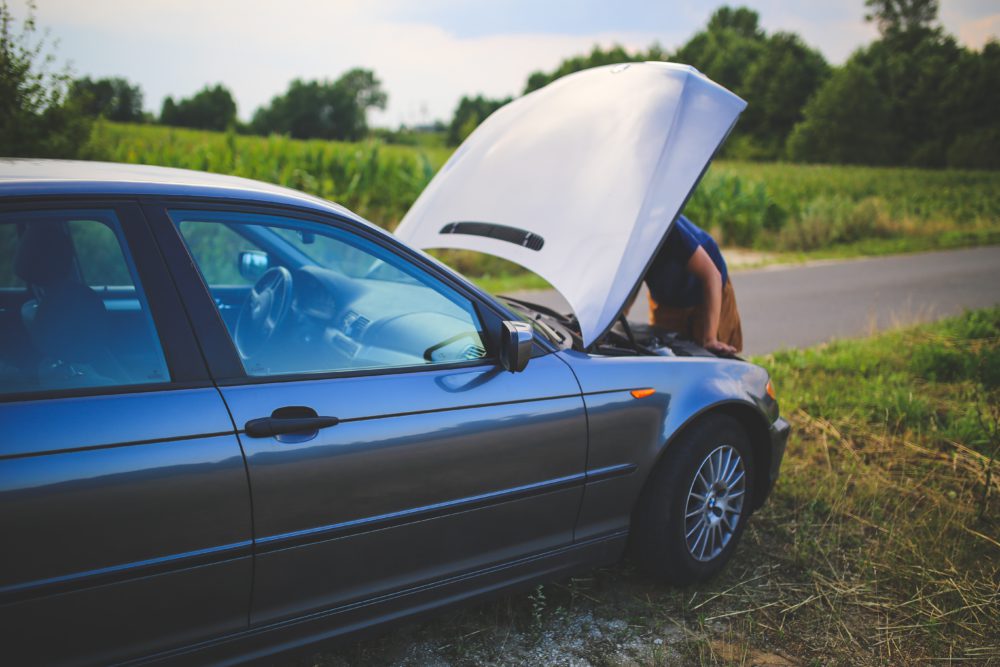They don’t teach you much about MOTs in school. Or anywhere else for that matter. So you’ve probably got some questions about how they work. Well, this guide – complete with MOT checker – is here to answer them. And we won’t even make you put your hand up. Just click on the questions below and find the information you need.
Contents.
A guide to getting your MOT done.
- When is my MOT due?
- Where can I book an MOT?
- How much does an MOT cost?
- How long does an MOT take?
- How do I prepare for an MOT?
- Where’s the best place to get an MOT done?
A guide to MOT basics.
- What is an MOT for?
- What does MOT stand for?
- What happens if my car fails its MOT?
- Do I need to pay for an MOT retest?
- Can I drive without an MOT?
- What happens if I’m caught driving without an MOT?
- Is there an MOT grace period?
- Will the police know whether I’ve had an MOT?
- What happens to my car insurance if I don’t have an MOT?
Let’s get into it…
Getting your MOT done.
When is my MOT due?
If your car is more than 3 years old, you need an MOT every year. When your car passed its last MOT, you would’ve gotten a certificate saying when the next one is due. But guess what? You don’t need to go rummaging about in any draws looking for dusty paperwork. You can simply use our handy MOT checker.
Where can I book an MOT?
So you’ve used the MOT checker and noted your due date. Now what?
Well, you can book an MOT at any licensed MOT centre. Just search ‘MOT centres near me’ and you should get a list of your options.
By the way, if you’ve ever gone past a garage and wondered what that blue sign with 3 white triangles that make a sort of evil looking face means, wonder no more. That symbol just shows that you can get an MOT there.

How much does an MOT cost?
The government set a maximum price for MOTs. A centre can charge less if they like, but not more. These limits are:
- £54.85 for a car.
- £29.65 for a motorcycle.
Prices can differ for bikes with sidecars or larger vehicles. You can find the details of those maximum MOT prices here.
How long does an MOT take?
Usually 45 minutes to an hour.
How do I prepare my car for an MOT?
Generally speaking, keeping your car in good condition all year round is the best way to prepare for an MOT. If you have any issues with anything on the list below, you should get it fixed ahead of time to avoid failing. (Use the MOT checker near the top of this article to see when yours is due).
Lights: Faulty lighting is the most common reason for a failed MOT, but it’s also a pretty easy issue to fix. Be sure to check that your headlights, brake lights, indicators and the lights for your number plates are all working.
Brakes: About 10% of MOT failures are down to brakes. If yours are making any squealing or grinding noises, get them looked at. If your car pulls to one side a little when you brake, that’s another sign that something’s up. Likewise, if the handbrake doesn’t hold the car properly when you park on a slope, that could stop you passing your MOT.
Suspension: Suspension issues cause even more MOT failures than brakes and – annoyingly – they’re harder to spot. The two most obvious signs are strange clunking sounds while cornering or going over bumps, and your car not appearing to be level while parked. If your car bounces about after you’ve pushed down on it (or while breaking), that could be the shock absorbers – as our pal here explains:
Tyres: This is an easy one to stay on top of. Your tyres need to have a tread depth of at least 1.6mm to be legally roadworthy. If you pop a 20p into the tread, the outer band should be covered. Obviously, they shouldn’t have any lumps, bulges or cuts either.
View of the road: Driving safely is a lot harder if you can’t see the road. Anything that might block your view – be it a poorly-placed satnav, a crack in the windscreen or an unsecured hood – could cause your car to fail its MOT. Likewise, your wipers need to be working and any cracks must be smaller than 10mm if in the wiperzone (they can be 40mm outside it).
Exhaust: This will be tested for emissions and noise levels. If you’ve noticed dark smoke coming from your exhaust, you might be on course to fail your MOT – so get it looked at.
Horn: This needs to work for your car to pass its MOT. So give it a press. If it makes a loud noise, it’s working.
Seatbelts: If you’ve got a seatbelt issue you’ve been meaning to fix, do it before your MOT is due. In fact, do it right now.
Steering: This isn’t an easy one to check yourself – but it is an important part of the test. If you feel there’s a problem, don’t just leave it.
VIN (Vehicle Identification Number): This needs to be readable.
Doors: These must open fine from both sides.
Rust: Rust on or within 30cm of important safety features could mean failure.
Where’s the best place to get an MOT done?
There are two types of test centre: private garages and council-run test centres.
The council-run test centres don’t do repairs, just testing. Because of that, they don’t stand to make any extra money from you failing an MOT. A private garage, on the other hand, has the opportunity to offer any repairs you might need should you fail.
Because of this, some people say it’s better to get your MOT at a council-run centre. However, there’s no hard evidence to back this up. And if your car does fail, you’ll then need to go somewhere else to sort out the repairs. This might mean you miss the 10-day window for a free retest.
MOT basics.
What is an MOT for?
It’s basically a health check for your car. They’re required by law to keep unsafe vehicles off the roads.
What does MOT stand for?
Ministry of Transport.
It’s the ‘Ministry of Transport test’, so the proper abbreviation would be ‘MOT test’, but everyone just says ‘MOT’. It saves a precious few microseconds each time and, hey, life is precious.
What happens if my car fails an MOT?
That depends. There are two categories of defects that can cause your car to fail its MOT.
Dangerous defect: If your car has a ‘dangerous defect’ not only does it fail the MOT, you cannot drive it at all until the issue is fixed.
Major defect: If your car has a ‘major defect’ you won’t pass the MOT. However, you can still (technically speaking) drive it – as long as your previous MOT is still valid (which probably won’t be long, as people tend to leave booking their MOTs until quite near the deadline). Obviously, you need to fix the issues as soon as possible in order to have the car retested.
Once your previous MOT certificate expires, you cannot drive again until you get a new one.
There are also ‘minor defects’. Your car can still pass its MOT with minor defects, but it’s recommended that you get them fixed quickly. If you don’t they are likely to turn into major defects by your next MOT.
Do I need to pay for a retest if my car fails its MOT?
Depending on where you’ve had the MOT done, they may be able to do any necessary work and retest the car on the same day. In this case, they’ll only need to retest the areas of concern, and the retest won’t cost anything.
If you take the car away to have repairs done somewhere else, the retest will still be free as long as you bring it back to the same centre you had the original test within 10 days.
If the repairs take longer than ten days, or if you decide to try the test again somewhere else, you’ll have to pay for it.
How often do cars fail their MOT?
Quite often. It varies from year to year, but usually between ¼ and ⅓ of cars fail. So, it’s not just rustbuckets and bangers that fall below the expected standard. Even if your car is in pretty good nick, it’s worth doing a little MOT preparation.

Can I drive without a valid MOT?
No. The only exceptions are:
- If your vehicle is less than 3 years old.
- If your vehicle is more than 40 years old.
- If you’re on your way to an MOT test and can prove so.
What happens if I’m caught driving without an MOT?
It’s really not pretty. If your car is considered dangerous, you could get a £2,500 fine (or an unlimited one in the case of a van). If it’s not considered dangerous but you’ve just forgotten your MOT, the maximum fine is £1,000.
And that’s all on top of penalty points.
Is there an MOT grace period?
No. You have to pass a fresh MOT before your previous one expires.
There was briefly a grace period during the Covid lockdowns, because garages were shut – but it no longer applies.
If you’ve forgotten to get your MOT done, you cannot drive your car (aside from taking it to a pre-booked test).
Will the police know whether I’ve had an MOT?
Yes. It’s a simple case of scanning your licence plate with an ANPR (Automatic Number Plate Recognition) camera. This will tell them whether or not you have a valid MOT certificate.
What happens to my car insurance if I drive without an MOT?
It’s invalidated. Your insurance won’t cover anything that might happen while driving without a valid MOT.
Talking of insurance, if you’re not a high mileage driver, there’s a good chance you’re overpaying for your policy. So, why not get a quote and see if pay-by-mile could work for you?




